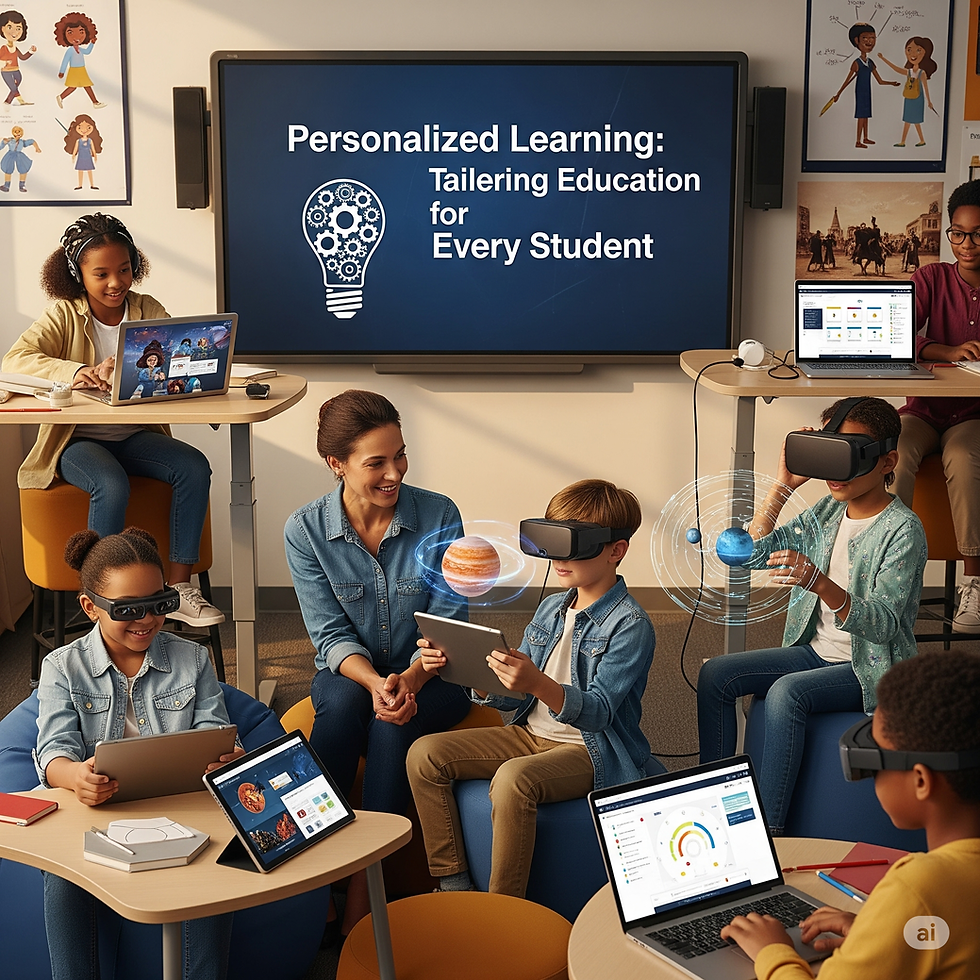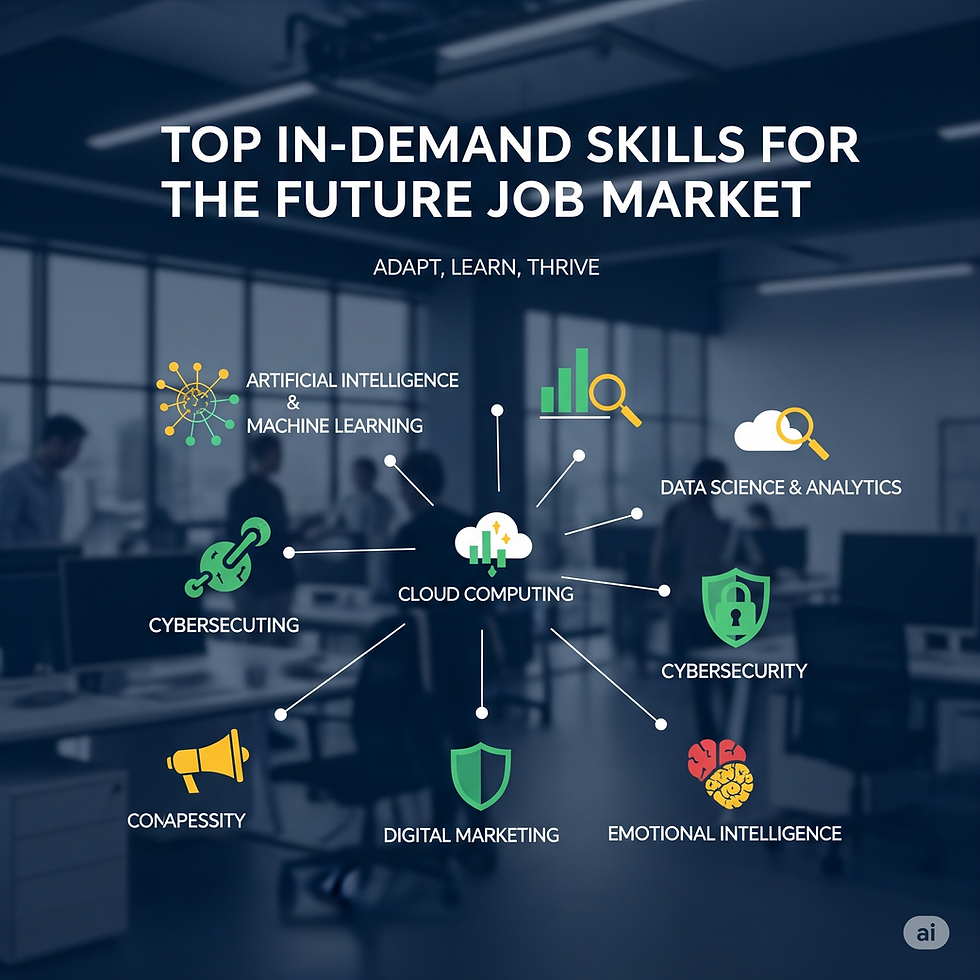Personalized Learning: Tailoring Education for Every Student
- Test Mail
- 2 minutes ago
- 3 min read
In today’s diverse classrooms, a one-size-fits-all approach to education no longer works. Students have unique learning styles, strengths, and challenges—making personalized learning a game-changer in modern education. This method adapts teaching strategies, pace, and content to meet individual needs, ensuring every student thrives.

What is Personalized Learning?
Personalized learning is an educational model that customizes instruction based on a student’s:
Learning preferences (visual, auditory, kinesthetic)
Academic strengths and weaknesses
Interests and career goals
Progress and mastery levels
Unlike traditional lecture-based teaching, this approach empowers students to take ownership of their learning journey, leading to higher engagement and better outcomes.
Why Personalized Learning Matters
1. Improves Student Engagement
When lessons align with a student’s interests and abilities, they become more motivated and invested in learning. Studies show that personalized education reduces dropout rates and increases academic performance.
2. Addresses Different Learning Paces
In a conventional classroom, some students struggle to keep up, while others feel bored. Adaptive learning technologies allow students to progress at their own speed, ensuring no one is left behind.
3. Enhances Critical Thinking & Problem-Solving
Instead of memorizing facts, students engage in project-based learning and real-world applications, fostering deeper understanding and critical thinking skills.
4. Supports Diverse Learners
Students with learning disabilities, gifted learners, and English language learners all benefit from tailored instruction that meets their specific needs.
Key Strategies for Implementing Personalized Learning
1. Adaptive Learning Technology
AI-powered platforms like Khan Academy, DreamBox, and ALEKS adjust lessons in real-time based on student performance. These tools provide:
Instant feedback
Customized learning paths
Data-driven insights for teachers
2. Competency-Based Education (CBE)
Instead of moving students forward based on time spent in class, CBE ensures mastery before progression. Key features include:
Flexible pacing
Skill-based assessments
Personalized learning plans
3. Student-Centered Learning Environments
Classrooms designed for personalized learning encourage:
Choice-based assignments
Collaborative group work
Self-directed projects
4. Data-Driven Instruction
Teachers use learning analytics to:
Identify knowledge gaps
Adjust lesson plans
Provide targeted interventions
Challenges of Personalized Learning
While personalized education offers many benefits, implementation can be difficult due to:
Limited teacher training in adaptive teaching methods
Technology access gaps in underfunded schools
Resistance to change from traditional educators
However, with proper professional development and resource allocation, schools can overcome these barriers.
Success Stories in Personalized Learning
1. Summit Public Schools
This network of charter schools uses personalized learning platforms to let students set individual goals and track progress, leading to higher graduation rates.
2. AltSchool
A tech-driven micro-school that combines project-based learning with AI-powered tools, helping students thrive in self-paced environments.
3. Lindsay Unified School District
By adopting competency-based learning, this district saw significant improvements in standardized test scores and student engagement.
How Teachers Can Personalize Learning
Educators play a crucial role in making personalized education work. Strategies include:
Conducting learning style assessments
Offering flexible seating and group options
Using blended learning (online + in-person instruction)
Encouraging student reflection and goal-setting
The Future of Personalized Learning
As EdTech continues to evolve, we can expect:
More AI-driven tutoring systems
Virtual and augmented reality in classrooms
Increased use of gamification
Global collaboration through personalized online learning
Schools that embrace personalized learning will prepare students for a fast-changing workforce, where adaptability and lifelong learning are essential.
Final Thoughts
Personalized learning is not just a trend—it’s the future of education. By tailoring instruction to individual needs, schools can unlock each student’s full potential. Whether through adaptive technology, competency-based models, or student-centered classrooms, the goal remains the same: better learning outcomes for all.
Educators, policymakers, and parents must work together to make personalized education accessible to every student, ensuring equitable opportunities in an increasingly digital world.



Comments